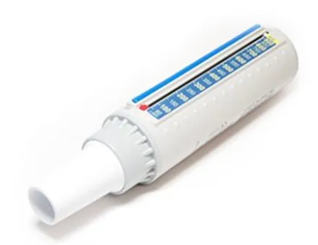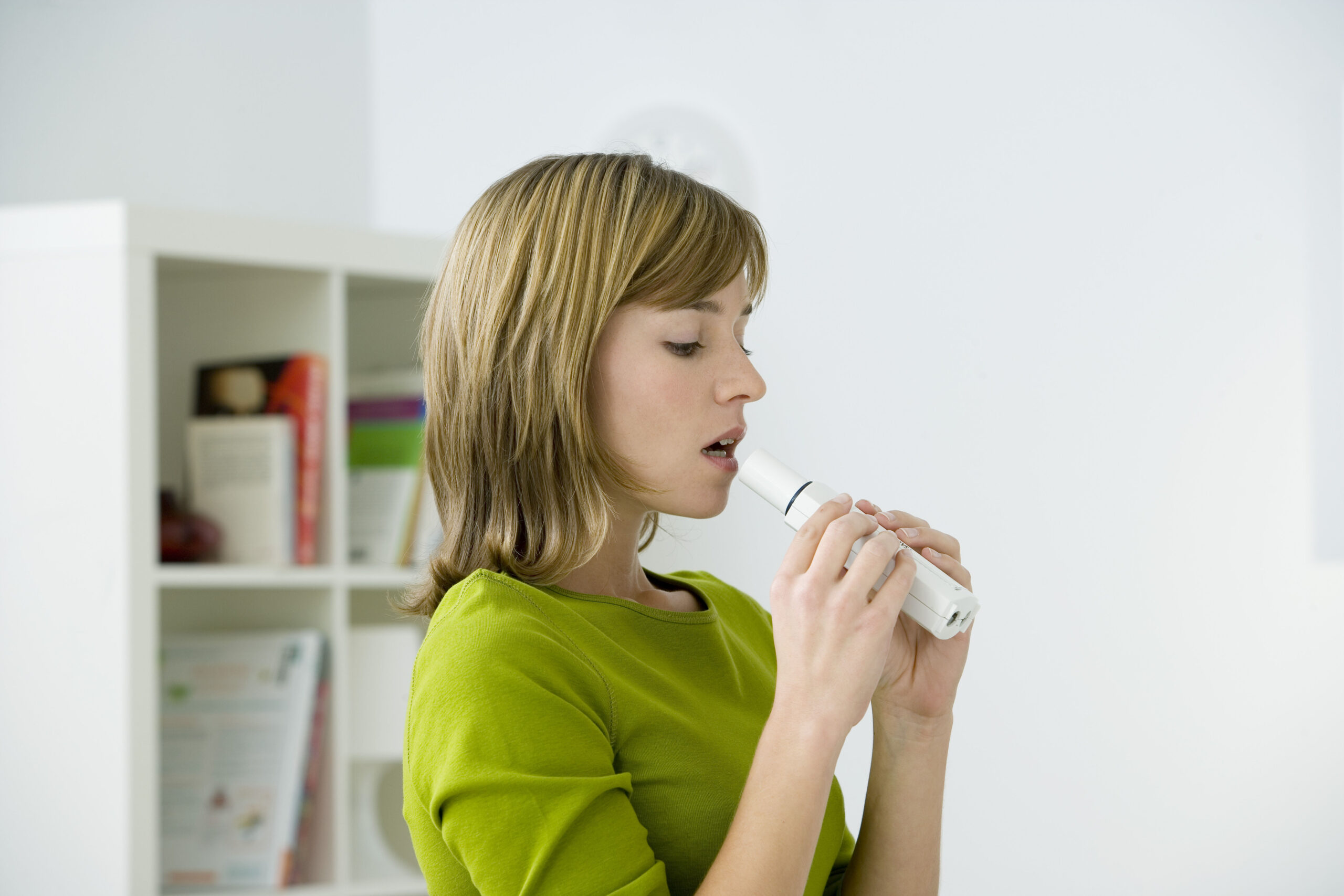What is a peak flow meter?
A peak flow meter, also known as a peak expiratory flow rate meter, is a small handheld device that helps you measure how well air moves out of your lungs. This is measured in litres per minute. By blowing into the mouthpiece as hard as you can after a deep breath, you get a reading of the maximum (or peak) rate at which you can blow air out of your lungs. It can help monitor changes in your airways if you have asthma or COPD.
During an asthma flare-up, the airways in the lungs slowly start to narrow. This slows the speed of air moving in and out of the lungs which is detected by the peak flow meter. A peak flow meter can help show the narrowing of the airways well before an asthma attack happens and help you figure out what may be triggering your asthma.
Not everyone needs a peak flow meter. It can be useful at certain times in a person’s asthma management, such as tracking changes over several weeks during a problem time. Some people use them all the time. Some people don’t find it adds value to their asthma care. Talk to your doctor to see what is best for you.
Book a call with an asthma educator
 |
 |
| Peak Flow Meter | Smart/Digital Peak Flow Meter |
Your peak flow reading is most useful if you measure it each day and record the result on a chart. This way you can see if your scores are trending up or down. You can do this on a paper chart or using an app. If you have an electronic peak flow meter, this may record your results for you.
 |
 |
| Paper Chart Example | App Chart Example |
Using Peak Flow in Asthma Management
Peak flow is not a test used to diagnose asthma. Peak flow testing can be useful when done in addition to monitoring asthma symptoms and reliever use. Some people will have peak flow ranges listed on their Asthma Action Plan as a guide to when they need to step their treatment up or down – see image examples below.



What is my peak flow normal range?
To start with, you need to determine what your personal best peak flow is. To do so, you will need to check your peak flow each day for two weeks. Each morning and evening, take three peak flow readings and record the highest one each time. Your doctor will use your average peak flow meter reading and personal best to calculate your normal range and ‘action points’ for your Asthma Action Plan. If you are using a smart/digital peak flow meter device, the app might work out your normal range for you.
It is important to always use the same peak flow meter. Your results may differ on your peak flow meter verses your doctor’s peak flow meter. This is one of the reasons why knowing your personal best is important.
When are peak flow meters really helpful?
- If you’re someone who doesn’t notice your asthma symptoms until they are really bad, long-term peak flow readings can be very helpful to show when to step up your medicine.
- If you don’t wheeze or present with the ‘traditional’ asthma symptoms, peak flow readings help show your health professional how bad your asthma is compared to your personal best.
- If you think your asthma is being triggered at work, you can use a peak flow meter multiple times a day, looking for patterns over 2-8 weeks.
- If you’re a parent, peak flows can be very helpful in knowing how and when to treat your child’s asthma, from age 12 and up. If you would like to start using peak flow to manage your child’s asthma, talk to their doctor to check that it is suitable for them, and work with the doctor to update their Asthma Action Plan.
- If you’re someone who likes to use numbers and objective measures, you may decide you would like to use peak flow to help manage your asthma and discuss it with your doctor.
- If you want less life admin, try a digital peak flow meter.
If you are thinking about using a peak flow meter, talk to your doctor. They can help make sure it is the right choice for you, and make sure you know how to use it to manage your asthma.
What is the difference between peak flow meter and spirometry?
Peak flow meters are small devices that you can use at home to monitor your asthma. They measure your peak expiratory flow in litres per minute and can support how you treat your asthma as per your Asthma Action Plan. They can be very variable and are not used for diagnosis.
Spirometry is used to diagnose and monitor asthma and other lung conditions. It is done by a trained health professional or scientist with a device which is attached to a computer to get a complex reading.
Spirometry measures a range of things such as:
- forced vital capacity (FVC)
- forced expiratory volume in 1 second (FEV1)
- the ratio of FEV1 to FVC (FEV1/FVC ratio)
- the change in your results before and after using your reliever
These results are used to help your doctor or specialist to diagnose asthma and monitor your lung function.
 |
 |
| Peak Flow | Spirometry |
Asthma Educators can answer your asthma questions
Book a FREE phone call at a time that works for you or call us direct on 1800ASTHMA (1800 278 462).
Resources





 1800 278 462
1800 278 462






